We were anchored in a branch of the Bras d’Or Lakes of Cape Breton, Nova Scotia, Canada, where a soft breeze wafted the scent of rain-drenched balsam pine trees into the air. The piercing cry of a tern cut in to my early morning sleep. I wondered, “How many times will that teenage tern cry before its parents feed it?” A vague answer came to my drowsy mind, “hundreds of times, one after the other!”
Making one call of the wild after another, three terns landed on the front bow railing of my boat at 5 a.m.
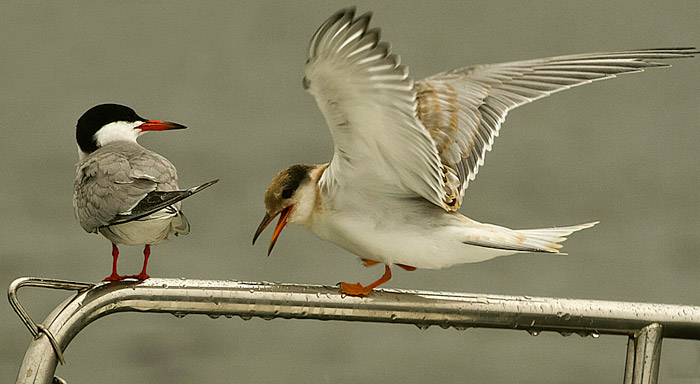
But for the tern alarm clock, the waters all around were tranquil. There was no traffic or airplane noise, only a kiss of rain on the roof. Dripping wet after a night huddled under this light Nova Scotia drizzle, this young tern was hungry. Its attentive parents began diving and then spent their morning airlifting minnows to their ternlet.
Watching them through the lens was a great pleasure, in spite of their break of dawn appearance. Their calls mixed with the hiss of rain to create a unique Bras d’Or sound-scape.
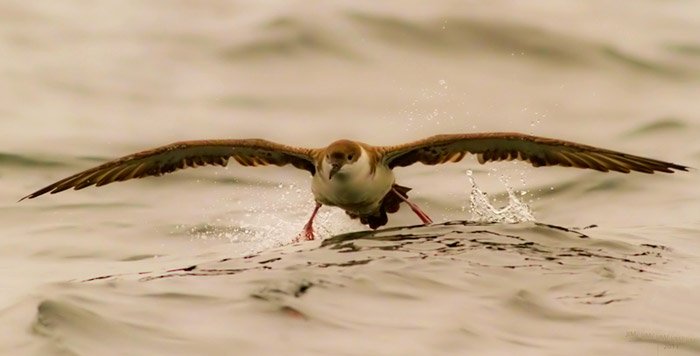
While adventure photography lured me to Cape Breton, its wildlife kept my lens cap off. Sailing along the Atlantic coast to get to the Bras d’Or, we spotted Shearwaters, Bald Eagles, Puffins, Black Guillemots, Great Blue Herons, and Kingfishers.
Birds were everywhere. A few of these species take part in North America’s largest migration of almost 40 million seabirds that fly to Atlantic Canada every year.
Underway on Nova Scotia’s coast, we also saw mammals: Finback Whales, Humpback Whales, Minke Whales, Harbor Porpoise, Saddleback Dolphin and many Gray Seals. These seals below were feeding in large pods made up of bulls, cows and pups. The larger bulls had noses with long arches.
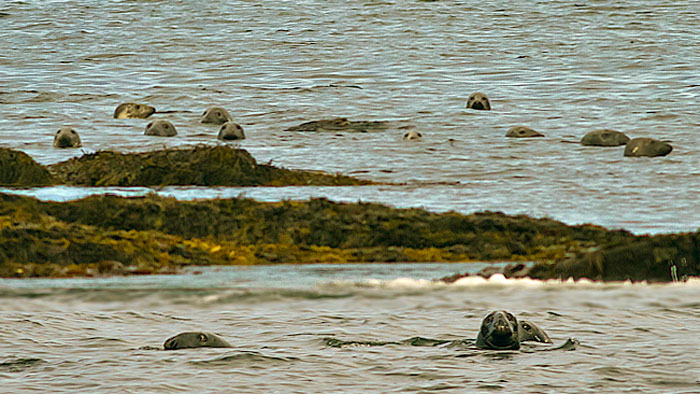
Later that week, we sailed to another harbor in the Bras d’Or. There, while photographing a Bald Eagle gripping the branches of a downed tree, I began to appreciate how diverse this huge area has become.
Bras d’Or Is Actually An Inlet
The Bras d’Or is not a true lake, but an inlet from the Atlantic–a large warm-water estuary.
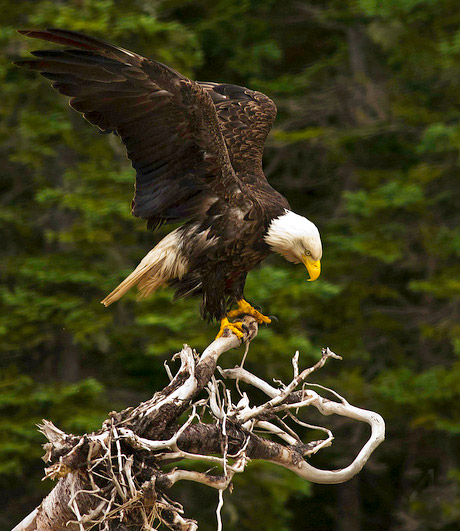
There are so many stunning basins and islands here that early French explorers dubbed it Bras d’Or (“arms of gold”) for all the food sources and safe harbors it offered. The Bras d’Or Lakes area became Canada’s 16th Biosphere Reserve on June 29, 2011. The biosphere covers 450 square miles of water and inland parks.
As Canada’s newest biosphere, the Bras d’Or Lakes join existing reserves, such as Big Bend National Park in Texas, Everglades National Park in Florida and 580 other designated biospheres worldwide.
The United Nations Educational, Scientific and Cultural Organization (UNESCO) creates these reserves to address this question: Can we sustain and preserve animal and plant diversity and simultaneously satisfy the food, housing and business needs of an growing human presence?
The answer is, “Yes.” Ideally, every biosphere reserve tries to support businesses that sustain the economy. Biospheres not only support local people in protecting their environment, but its programs encourage all of us to save resources for future generations. In the Bras d’Or Lakes, resources mean everything from eagle habitat, to First Nation aquaculture, to wild flowers along the shoreline.
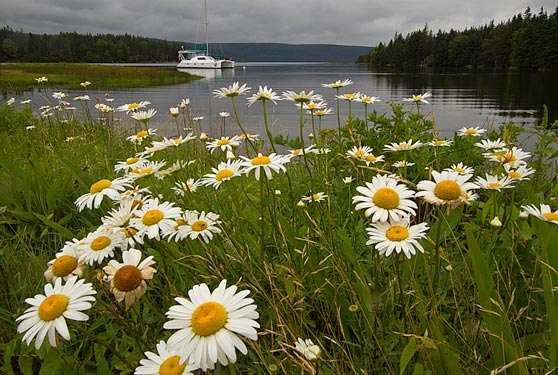
Specifically, what does the biosphere designation mean for the people of the Bras d’Or Lakes? The plan means core areas are set up to strictly protect both the environment and human culture. For instance, the Mi’kmaq (Meeg-maw) First Nations people whose home is the Bras d’Or Lakes can still farm for mussels as they always have done and also develop businesses in the area.
The Bras d’Or Lakes Biosphere sets up buffer zones and transition areas. These protect economic interests and the environment. Marinas and other Nova Scotia businesses boost the economy while following clean marina policies and environmental programs.
The biosphere goals support cooperation between government managers, scientists, part-time residents, and year round local residents. The key is cooperation so all can enjoy the beauty of the Bras d’Or.
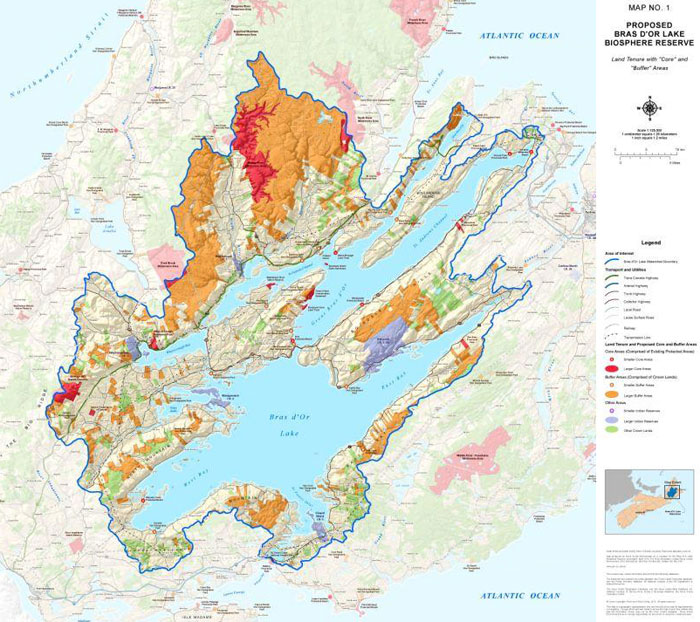
Special Notation:
The inventor or the telephone and amateur photographer Alexander Graham Bell lived on the Bras d’Or Lakes for many years. With a global perspective, Bell gave Cape Breton this homage:
“I have traveled around the globe. I have seen the Canadian and American Rockies, the Andes, the Alps, and the highlands of Scotland, but for simple beauty Cape Breton out rivals them all.”
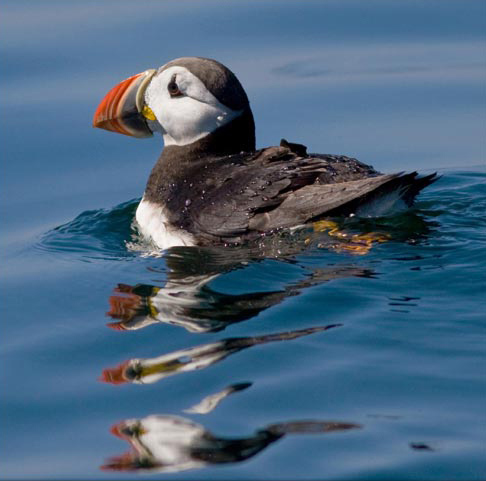
© 2011 Jim Austin. All Rights Reserved.
Atlantic Puffin in the open ocean
was photographed with a 400 mm lens.
by Jim Austin

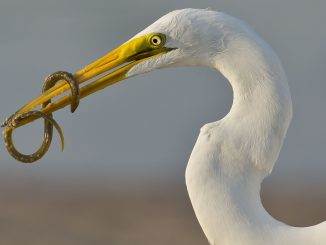
Leave a Reply